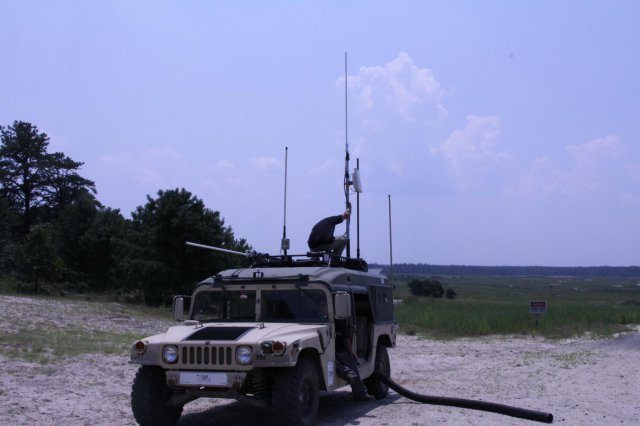The U.S. Army employed a 4G cellular network this summer at its integrated capabilities testbed at Fort Dix, N.J.; this was done to address integration with current network designs and to enable actionable intelligence for dismounted squads.
The U.S. Army Research, Development and Engineering Command’s communications-electronics RD&E center, or CERDEC, enabled a mounted/hand-held computing environment that allowed for the dissemination of mission command data, imagery, streaming video and voice between dismounted Soldiers and fixed command posts.
This was achieved by integrating a fourth-generation Long Term Evolution, or 4G LTE network with a multi-tiered transport architecture that leveraged components of the Capability Set 13 design — including the Soldier Radio Waveform, the Adaptive Networking Wideband Waveform, terrestrial communications and WIN-T Increment 1 and Increment 2 satellite communications.
“Based on personal experiences or commercials they see, many people recognize that 4G networks introduce greater capacity, which allows you to push more data, larger images, video, etcetera,” said R.J. Regars, software development lead for CERDEC PD C4ISR & Network Modernization. “But it’s an isolated cloud, which doesn’t translate well to the tactical environment without significant investments in infrastructure to provide reach back from the tactical edge to a brigade or battalion. So you need to look at what can be integrated across the terrestrial communications network, where there’s less bandwidth.”
Product Director Command, Control, Communications, Computers, Intelligence, Surveillance, Reconnaissance & Network Modernization is an R&D program within RDECOM CERDEC that focuses on the future network — near-term and several years out — providing the Army with a relevant venue to assess next-generation technologies and to facilitate technology maturation.
Part of its mission is to provide technology and system maturity evaluation/assessment services to RDECOM centers, labs, and programs of record,” Regars explained. “As such, the exploration of 4G LTE cellular networks was conducted in support of the Soldier Domain initiatives of RDECOM’s Natick Soldier RD&E Center.”
“We’ve had a long-standing collaboration with CERDEC PD C4ISR & Network Modernization; they handle the network pieces and infrastructure while our focus is developing the user interface to portray the information in the most optimal way for the dismounted Soldier,” said David Darkow, Natick Soldier RD&E Center, or NSRDEC, lead for Soldier Systems integration and experimentation.
“The configuration and performance of the network will determine what we can push to the Soldier and what we can do in terms of information portrayal,” Darkow said. “We’ll adapt our work to fit the different network types so we can give the Soldier the maximum capability that will come with that network.”
The PD first explored the use of commercial cellular in 2010 as a proof of concept, combining 3G networks and handhelds with tactical communications systems to transmit biometrics and mission command data, share imagery, send alerts, call for fires and to run Force XXI Battle Command Brigade and Below Joint Capabilities Release functionality, or FBCB2 JCR. Data was sent back and forth between dismounts and the tactical operations center.
In 2011, CERDEC demonstrated the Multi-Access Cellular Extension foundational architecture to help pave the way for integrating commercial cellular technologies into current and future force networks, allowing use beyond a fixed infrastructure, such as WiFi access points or cellular base stations. Technologies under MACE seek to enable the secure use of smart devices and the ability to provide direct device-to-device MANET-like features, enabling the Army to use multiple commercial wireless solutions, which could save the Army billions of dollars.
Science & Technology efforts to address the tactical aspects of employing commercial cellular — such as information assurance and policy-based security — will factor into shaping future PD C4ISR & Network Modernization events, said Jason Sypniewski, chief for PD C4ISR & Network Modernization’s Integrated Event Design and Analysis branch.
“This summer’s exploration of 4G LTE can be viewed as a data point to be correlated across a larger sample size of efforts looking at the tactical cellular arena,” Sypniewski said. “It’s just one example of how extending the development environment to the field can be applied toward building a body of evidence to accelerate informed decisions on the right capabilities and where they should be employed within the network.”











